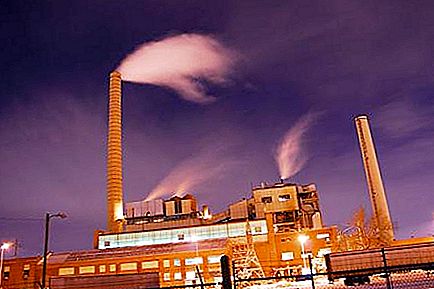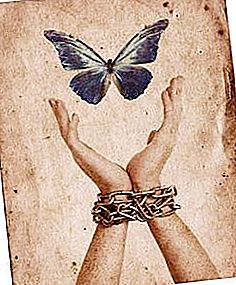Vasilievsky Island - a special place in St. Petersburg. It is with him that many pages of the formation and development of the city are connected. One of the places on the island will be discussed now.
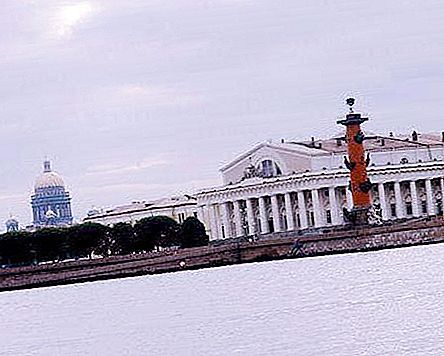
Vasilievsky Island: pages of the "original" history of St. Petersburg
The very first stage of development and development of young St. Petersburg is associated with the Petrograd side (then Berezov, or Fomin Island), or rather with Troitskaya Square: it was there that the first center of St. Petersburg was located and life was in full swing.
After moving in 1712 to St. Petersburg all government agencies and close associates of Peter I, the city became the capital of the Russian state. And the king decided to transfer the city center to Vasilievsky Island, which was located at the place of the Neva’s division into two large branches - the Bolshaya and Malaya Neva, and went along the coastline to the bay, and therefore was more suitable for the development of trade and shipping. And it was decided to transfer the port to its arrow.
The development of the city development plan in 1714 was entrusted to the first architect of St. Petersburg, Domenico Trezzini, but the French architect Jean Baptiste Leblon, who arrived in the northern city in 1716, received the same task: Peter I was not satisfied with the Trezini project, which was obtained at that time. But Peter did not like the Leblon project either. It was decided to return to the Trezzini plan, but refined taking into account the king's comments. The island’s development plan is based on a system of canals perpendicularly crossing the island and each other.
However, for some reason, the channels that began to dig were never dug, and instead streets appeared, where each side was a line. They crossed three avenues: Bolshoi, Sredny and Maly.
Vasilievsky island - the center of industry of the city
From the very beginning, Petersburg began to develop as an industrial center. Under Peter I, as early as 1703-1704 saw mills appeared here, and somewhat later - the Powder yard, Green workshops, etc.
In the second half of the XIX - early XX centuries, large plants appeared in the southern and northern parts of the island, such as the Pipe Plant (a branch of the St. Petersburg Cartridge Plant), the Cable Plant, Siemens - Shukkert and Siemens - Halske, which made electrical mechanisms and instruments, and during the years of World War I switched to the production of equipment for military equipment, the Baltic Plant is a center for the production of ships for the Baltic Fleet, etc.
Leather line in St. Petersburg
The line was located on one side along the coast of the Gulf of Finland, and therefore had the name - Coastal. In the second half of the 18th century, a cable factory was founded on the street in houses No. 5 and No. 6 by Kramp, and various enterprises were located in other houses of the line.
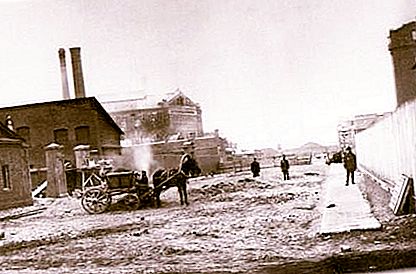
The name, now existing, was given to her only in 1845. What is a leather line? This place is associated with the production of leather goods that has opened here: the first to operate tannins - workshops for processing and dressing leather, and then - private factories, which by the end of the century there were already nine on the island. One of them was the factory of Nikolai Mokeevich Brusnitsyn. In addition, the Yegorovs leather factory was located in the No. 31 building, the Vladimir Tannery factory building in the No. 32 building, and the Y. Lutsh print-and-paper factory in No. 34.
In dd. No. 17 and No. 18 housed a foundry mechanical plant founded by Carr and MacPherson. Gradually, its territory greatly increased and began to occupy plots from No. 7 to No. 26. In the houses No. 38-40 and No. 39, the Siemens-Halske plant was located. In d. Number 23 - a factory for the production of phonograph records.
In addition to the tanneries, the warehouse and production facilities of the cement pipe plant were equipped on the St. Petersburg Leather Line.
House of the breeder Brusnitsyn
The site next to the one that now occupies the house at number 27 on the Kozhevennaya line, at the end of the XVIII century belonged to the widow of the merchant Anna Catherine Fisher. She was supposed to organize a leather enterprise in this territory.
Not far along the same line was a residential stone house with an office, which was bought by N. M. Brusnitsyn in the 19th century, where he settled with his family. And then he began to build a tannery here and develop production. After the death of Nikolai Mokeyevich, his case was continued by the son Nikolay Nikolayevich, a real state adviser and honorary citizen. Red brick industrial buildings can still be seen at the indicated address.
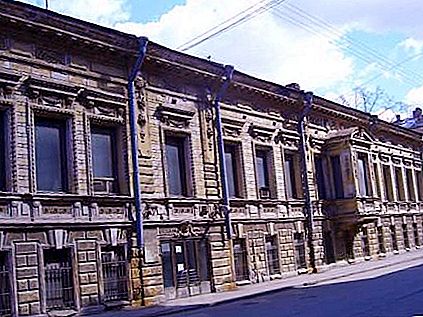
But the house at number 27 was rebuilt and became so luxurious that it entered the piggy bank of architectural masterpieces of St. Petersburg as one of the most beautiful mansions built in the eclectic style. In fact, this house was originally rebuilt by A. S. Andreev, who added an additional volume from the west, increased the windows of the first floor and the height of the second floor. Then A. I. Kovsharov further increased the height of the second floor and attached an extension from the east - for the main staircase. A Winter Garden was organized in the courtyard, for which a greenhouse was built.
The facade of the mansion is decorated with rustication in the form of small rectangular blocks on the first floor, and on the second - in the piers between the windows in the form of elongated rectangles rotated horizontally. In addition, the second floor is decorated with one rectangular and two semicircular bay windows, triangular and arched gables, sandriks above the windows and stucco molding in the form of garlands.
After the revolution of 1917, the building passed to the tannery of them. Radishchev and became a plant management.
The neighboring building at number 25 was built by the same A. I. Kovsharov as a residential building for the workers of the Brusnitsyns tannery.
Winery
Peretz Winery on the Tannery was founded at the beginning of the 19th century. It was located in a purpose-built one-story house at number 30. The author of the construction was the famous St. Petersburg architect Vincent Ivanovich Beretti, and in the second half of the century, the equally famous architect Rudolf Bogdanovich Bernhard built it on the third floor.
The front facade of the house is decorated with three classic porticoes. And the walls are painted in red brick color.
From 1820 to 1850, the wine warehouse of the Treasury Chamber was located in this house, and then the building passed into the possession of the Vladimir Tannery. Recall that the same building also owned the neighboring building at number 32.

